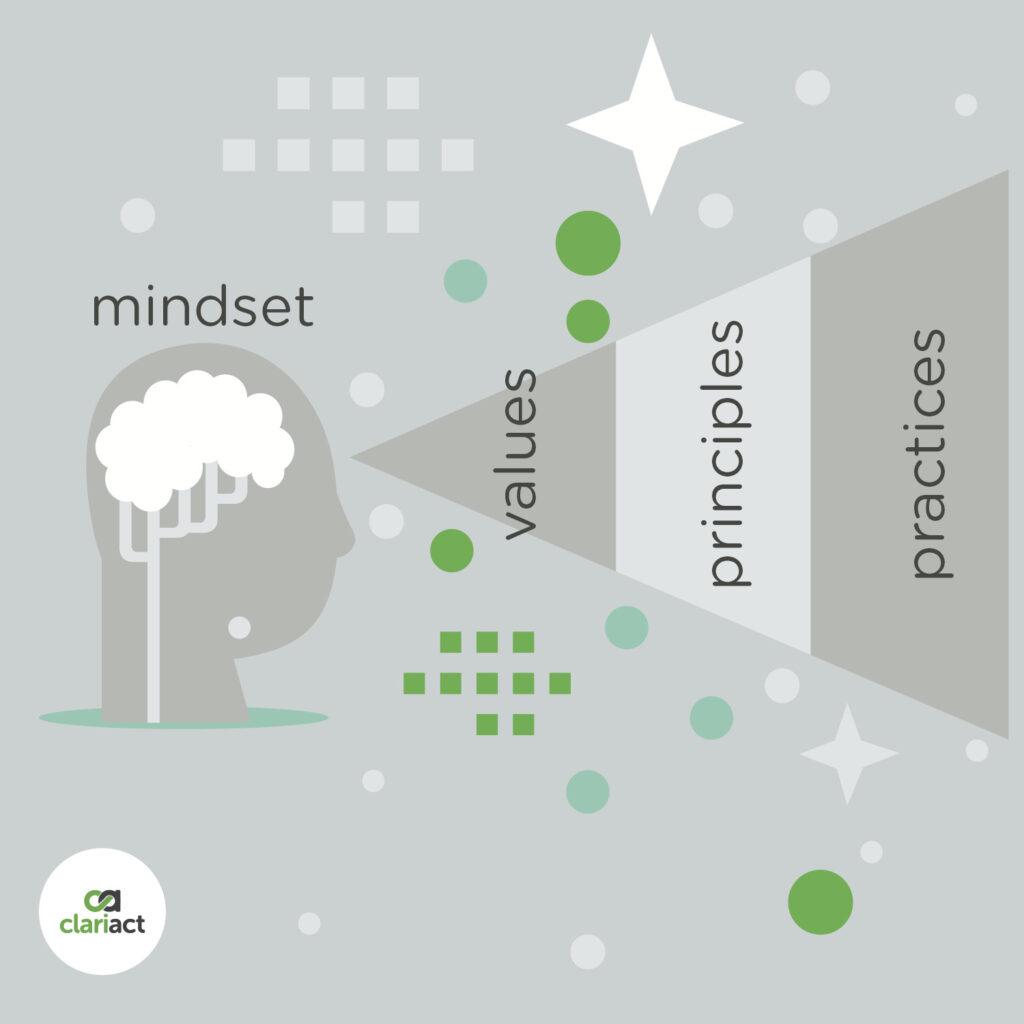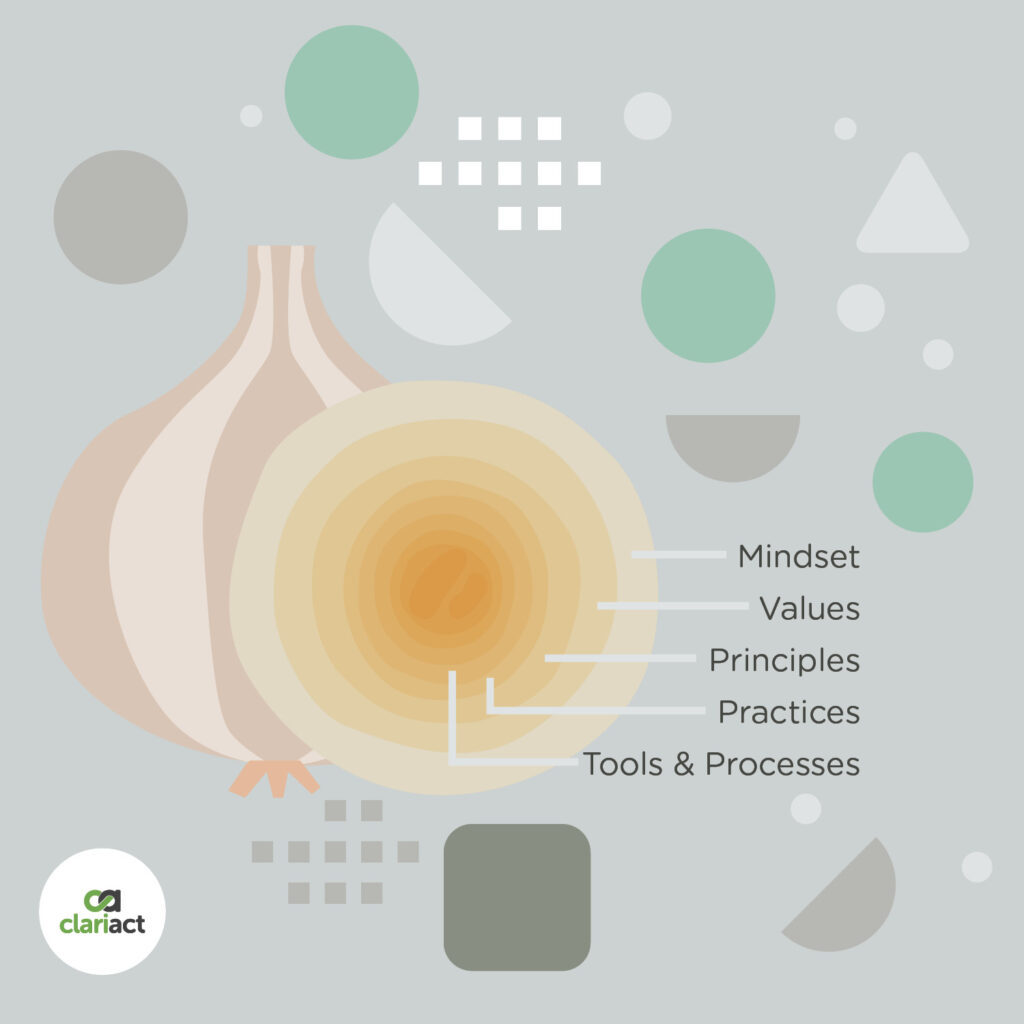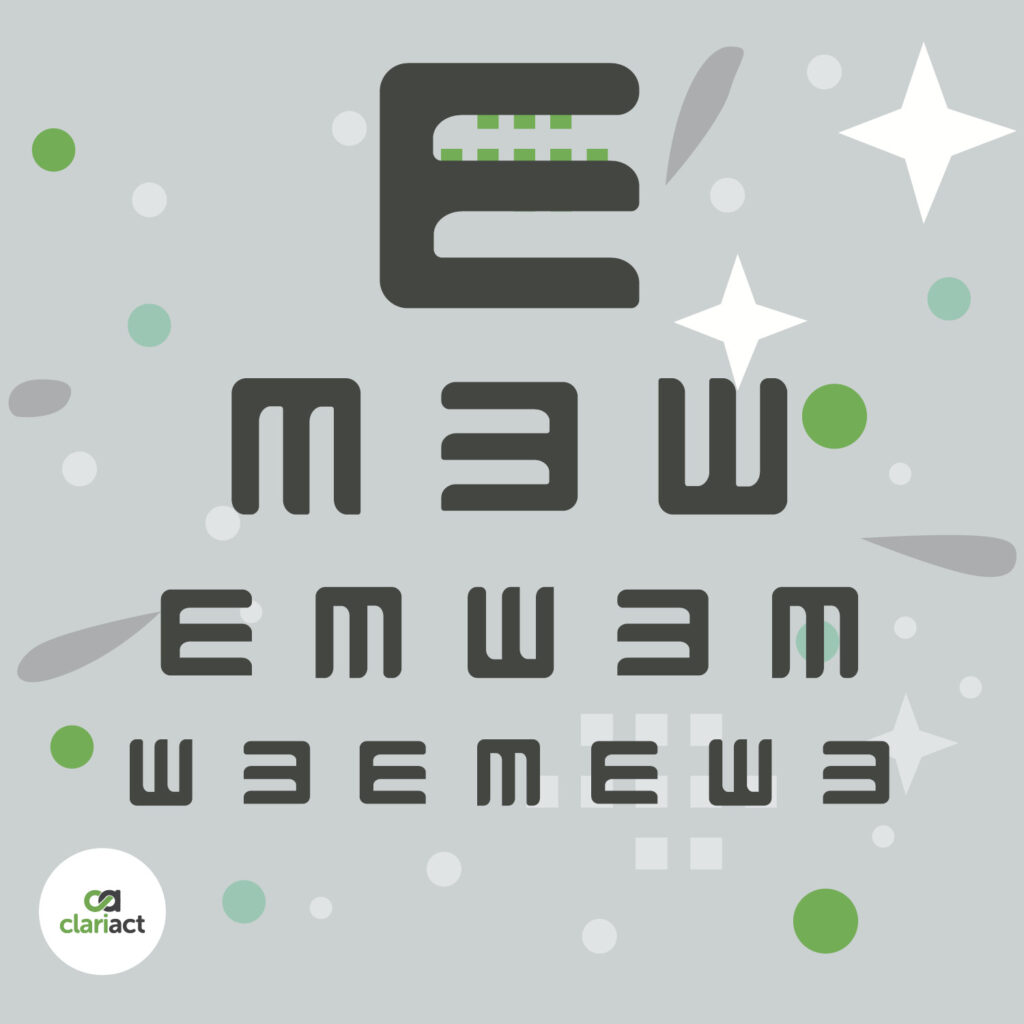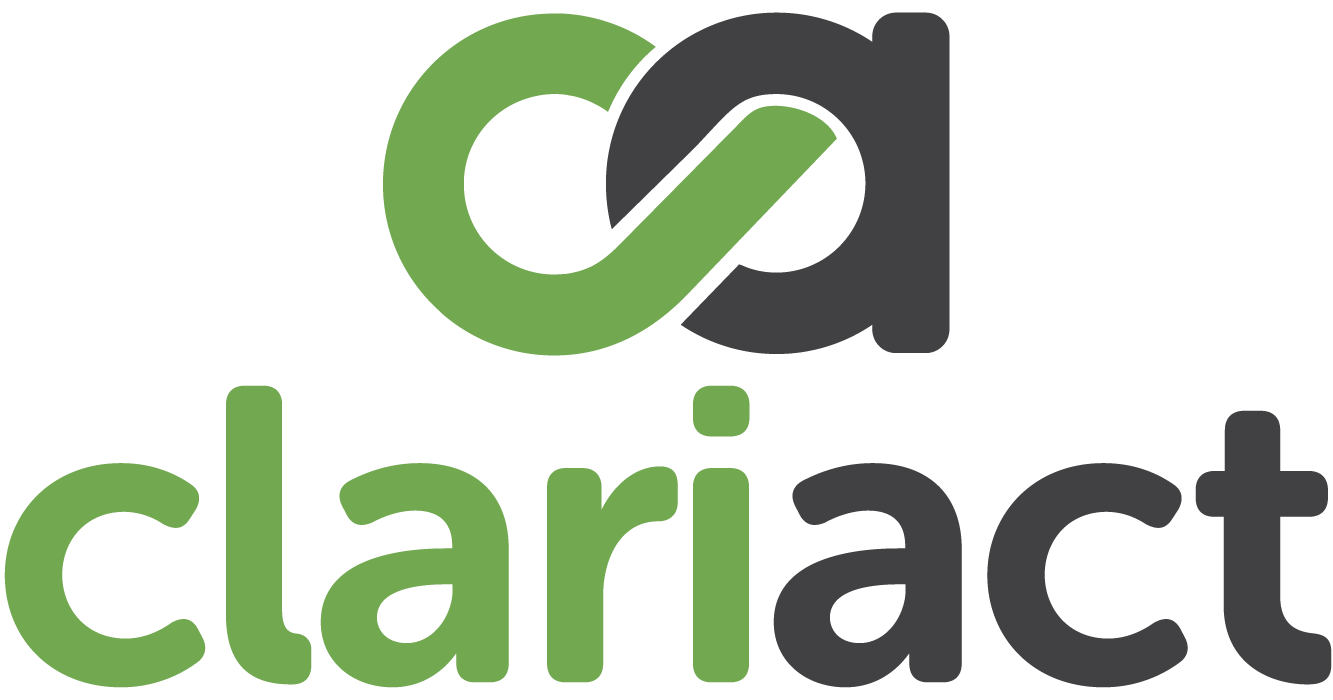What is the definition of an agile mindset?
An agile growth mindset is a mindshift that:
- Responds to change in uncertain environments
- Delivers consistently
- Adds incremental value for customers
- Gets work done through small self-organizing teams
- Works iteratively and interactively
- Facilitates learning and growth over time
Responding to change in uncertain environments
An agile mindset is about leaders responding to changes that occur in uncertain and unstable environments. It is being aware of and thinking about what’s going on around us. By doing this, we can identify the uncertainty we’re facing and figure out how to adapt to it as we go along.
Delivering consistently
Leadership consultant Steve Denning defines an agile mindset as being “preoccupied — and sometimes obsessed with — innovating and delivering steadily more customer value, getting work done in small self-organizing teams and collaborating together in an interactive network.”
Adding incremental value for customers
The thought process of an agile mindset involves learning and staying flexible in order to adapt and deliver incremental value to their customers. Teams use different processes and tools to achieve this.
Getting work done through small self-organizing teams
An agile mindset is a flexible way of thinking which enables us, as self-organizing teams, to adapt quickly to changing situations to keep producing value to customers on a regular basis.
Working iteratively and interactively
An agile mindset is essential for transitioning from a traditional framework to a modern approach to project management. This mindset encourages people to work in an iterative fashion. During an iteration, the team actively develops and tests a section of work within a short period of time (ranging from one week to one month). It challenges the belief that projects should be rigidly fixed and that completing work involves simply ticking off checkboxes in a linear manner.
Facilitating learning and growth over time
Leaders and organizations with an agile mindset have the capacity to adapt rapidly to a quickly shifting marketplace. They no longer believe people’s qualities are fixed traits that cannot change. They rather have the underlying belief that people have the capacity to learn and grow with time and experience.
The history of the term from 1930
The history of the term “agile mindset” includes:
- Walter Shewhart: Plan-Do-Study-Act (PDSA) cycle (1930)
- The Organizational Anarchists: Agile Manifesto (2001)
- Carol Dweck: Growth Mindset (2006)
- Dr. Ahmed Sikhy: Values and principles and daily practices (2010)
- Gil Broza: Multiple Mindsets (2015)
- The Learning Consortium: Agile mindset (2015)
The agile management revolution is transforming the world of work. We have entered the age of agile, according to Professor Julian Birkinshaw. Within this framework, firms deliver instant, intimate and frictionless value at scale.
A striking element of this revolution is the widespread view among practitioners that success in agile management depends on an agile mindset.
The concept of an agile mindset has many roots:
Walter Shewhart: Plan-Do-Study-Act (PDSA) cycle (1930)
Some of the founding members of the agile movement credit the coining of the concept of agile mindset to the physicist and statistician Walter Shewhart of Bell Labs. He began to apply Plan-Do-Study-Act (PDSA) cycles to the improvement of products and processes. Shewhart taught this iterative and incremental development methodology to his mentee, W. Edwards Deming. The latter used it extensively in Japan in the years following World War II.
The Organizational Anarchists: Agile Manifesto (2001)
In 2001, 17 developers calling themselves ‘Organizational Anarchists’ met in Snowbird, Utah. They established the Agile ‘Software Development’ manifesto. This profoundly pragmatic manifesto, however,makes no mention of an agile mindset. Although they shared a view that management should talk about attitudes, approaches, points of view and philosophies it doesn’t mention “mindset” explicitly.
Carol Dweck: Growth Mindset (2006)
In the early 2000s, Stanford psychology professor Dr. Carol Dweck popularized the concepts of fixed and growth mindsets (Mindset: The New Psychology of Success).
She distinguishes between a fixed mindset and a growth mindset.
Fixed mindset: “I believe that my intelligence, personality and character are inherent, stale, locked down or fixed … It doesn’t change.”
This can be described as a traditional mindset. Individuals adhere to what they know best, choosing familiar paths over exploring new opportunities. They actively avoid obstacles or challenges. People hold a preconceived notion of the world and unwilling to alter it.
Growth mindset: “I believe my success is based on hard work, learning, training and doggedness.”
People with a growth mindset are open to new ideas and different ways of doing things. They do not run from a challenge. They persevere and think outside the box to develop a solution, even in difficult situations. Setbacks are not viewed as failures but rather as opportunities to learn. This is the essence of the agile mindset.
The history of an agile mindset from 2010
Dr. Ahmed Sikhy: Values and principles and daily practices (2010)
In 2010 Dr. Ahmed Sikhy adapts Dweck’s research and incorporates the key elements of the Agile Manifesto into a three factor definition:
- Values: There are four values in the Agile Manifesto. These Agile pillars prioritize individuals, working software, customer collaboration and responding to change
- Principles: The Agile Manifesto also contains 12 principles which focus on customer satisfaction, regular delivery, team autonomy, face-to-face interaction, continuous improvement and a sustainable working pace
- Practices: These are the various activities and processes used by teams to apply the agile mindset to their work. These practices could include estimation techniques, user story creation, and iteration planning. Activities will vary depending on the agreed upon project management framework.
According to Sikhy an agile mindset precedes, and even drives, the values and principles of the Agile Manifesto.

Gil Broza: Multiple Mindsets (2015)
Gil Broza (in The Agile Mindset, 2015) wrote that a leader may have multiple mindsets – Agile, Waterfall and Lean. Leaders then choose the appropriate mindset according to the task at hand. A critique of Broza’s view is that the elements of the Agile mindset are not likely to be swapped out for other mindsets on a regular basis. Leaders who value the prioritization of customers over shareholders, self-organizing teams over boss-driven individuals and networks over top-down hierarchies won’t adjust their mindset on a moment’s notice.
The Learning Consortium: Agile mindset (2015)
In discussions in the Learning Consortium, Menlo Innovations CEO Rich Sheridan suggested the term “ agile mindset” to describe observations from a series of site visits to firms implementing varieties of “agile management.”
A universal feature of these site visits was a realization that success depends on the vital leadership mindset. Where the management practices and methodologies were implemented without the necessary agile mindset, no benefits were observed. “Individually, none of the observed management practices are new. What is new is the way that the new management goals, practices and values constitute a coherent and integrated system, driven by and lubricated with a common leadership mindset”.
Sheridan continues: “Managers in successful firms seem to speak and act differently from those in the less successful firms. When managers [had a new mindset] benefits seemed to flow from it, even if there were shortfalls in processes, practices or systems. By contrast, when managers spoke and acted in a more traditional and bureaucratic manner, few if any benefits seemed to flow from it, even when the firms were implementing agile processes and practices according to the book”.
What metaphor describes an agile growth mindset?
An agile mindset can be described as:
- The rings of an onion
- Writing with a pencil
- A mental lens
- A radar scanning the environment
- The open windows of a lighthouse
Mindset as the rings of an onion
The agile onion illustrates an agile mindset as the outermost ring in sets of different methodologies for software development. This metaphor emphasizes that our mindset is the most powerful of the layers that make up agile. It is the source of ‘being agile’,, which precedes ‘doing agile’.

Mindset as writing with a pencil
One can compare the flexibility of an agile mindset to writing with a pencil. An agile mindset’s flexibility can be compared to writing with a pencil. Teams engage in iterative cycles to generate deliverables at regular intervals. As a result, customers can continuously gain insight into products before they reach completion and actively contribute their feedback to improve the development process. Why use ink when you can easily erase a pencil drawing to start afresh with a better idea?

Mindset as a mental lens
A mindset is the mental lens through which we view the world around us. It is how we simplify, categorize and interpret the vast amount of information we receive each day. We form this mindset through a lifetime of structured learning (classes, reading) and unstructured lessons (life events, work experience). Our mindset dwells in the subconscious and presents itself as deeply held beliefs, attitudes, assumptions and influences. We are often unaware of how our mindsets influence how we carry out our responsibilities and interact with others.
However, our mental lenses can evolve, develop and improve. The development of these lenses begins with an awareness of how one’s current mindsets were formed in the past. Furthermore, leaders must remain open to the possibility that existing mindsets need to transform in order to guide the organizational change required.

Mindset as a radar scanning the environment
A radar could also represents an agile mindset because it comprehensively and continuously scan the environment. This is an exploratory process, a future-oriented lens, seeking actionable insights.
This scanning for new ideas and different ways of doing things builds capabilities, identifies trends, discovers disruptive and emerging technologies and stays focused on customer needs.

Mindset as the open windows of a lighthouse
Mark Grond, the developer of the Organic Scorecard, sees awareness as the windows of a lighthouse. The dimensions of awareness that are open (like the open windows of a lighthouse) allows more light (insight). These ‘windows’ can shed light on self-awareness (I), systems awareness (It), or value awareness (We). According to Grond, Organic awareness determines the way in which leaders lead and therefore self-awareness and systems thinking is especially pertinent


